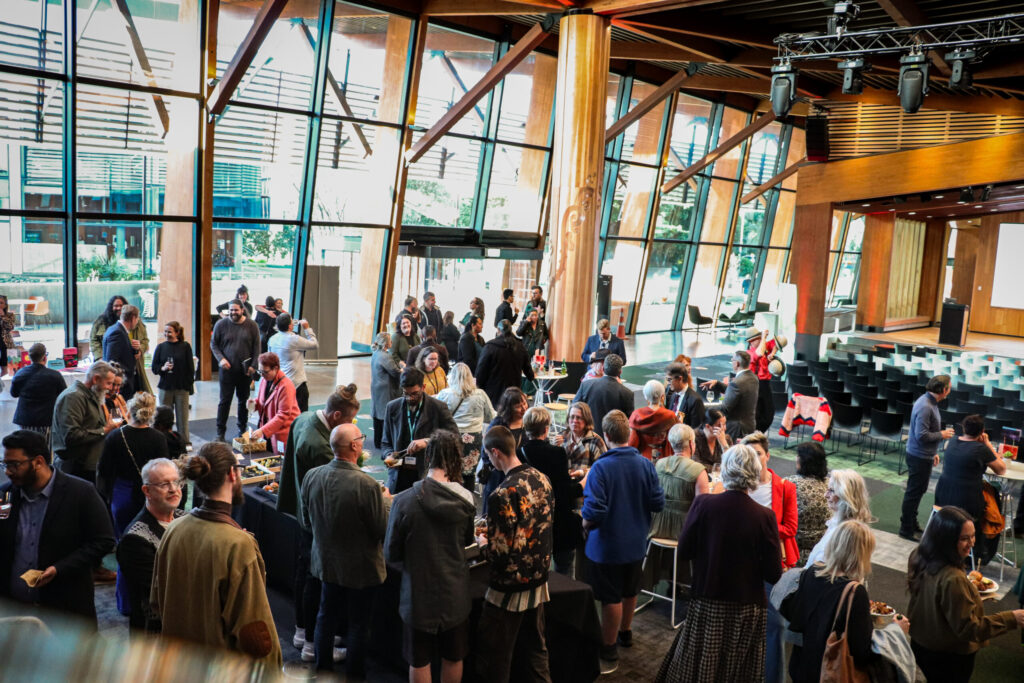Understanding the first 100 days: a look at community advocacy


At the end of 2023, we saw a new coalition government formed in Aotearoa, launching a 100 day plan. These first 100 days are a crucial period, where new incoming ministers brush up on their portfolios, seek advice and set their priorities.
We know that arts, culture and creativity is a powerful tool for wellbeing, and that our creatives and creative enablers contribute important value to their communities. We want to make sure that our political leaders know it too.
The time is now to tell those stories and to share with those new decision makers the opportunities that could be crafted, and to make a point of being clear about the things that we care about. If we all speak to the importance of arts, culture and creativity in our lives, those messages will get through.
We have created a Briefing for Incoming Ministers (BIM), a document which advocates for our sector, and for the power of arts, culture and creativity in all areas of life in Aotearoa. A BIM is a summary of the current opportunities and challenges within an area of ministerial focus. It provides insights into what is happening and suggests possible areas of focus to make positive change. This is something that we do as part of our advocacy mahi, following each general election.
We draw on local, national and international research, the knowledge we treasure from over a decade listening and learning from our communities, and from our own lived experiences as creatives. We also include the wellbeing research that was supported and enabled by our Waikato communities.
Because we know there is so much potential for a cross-government approach to engage with our sector, we took an approach that outlines a broad range of innovative opportunities. In the briefing, we go step by step, and unpack how arts, culture and creativity plays a part in many spaces, including: Health and Wellbeing, Economic Development, Arts in the workforce, Justice and Rehabilitation, Liveability and Regional Development, Tourism, Environmental Sustainability, Infrastructure, Technology and Innovation, Education, Community Cohesion and identity, Community Groups and Volunteers, Culture and Heritage, and Arts, Culture, Creativity and Ngaa Toi Maaori.
At every point, we provide supporting evidence, and make suggestions for possible action and things to consider. Our aim is to spark new thinking and encourage possibilities, and encourage an evidence-based, people-focused approach.
With the end of the year approaching, we sent this briefing to the new ministers, each with a personalised cover letter attached, explaining the direct connection to that minister’s portfolio. We also invited them to meet with Creative Waikato to explore future possibilities for our region and creative ecosystem together.
These messages join the chorus of other groups reaching out to the government, to share about the value of arts, culture and creativity. Our briefing sits alongside briefings from the Regional Arts Network Aotearoa, Creative New Zealand, The Ministry of Culture and Heritage, Te Taumata Toi-a-iwi, WeCreate, ToiMai, and others.
They bring together the voices of our communities who share about the value of arts, culture and creativity in their lives.
Together, we form a choir for change.

Image: Creative Waikato
Yes, there are organisations like us doing this important work, but there are some simple ways that you can also contribute to this mahi if you would like to add your voice. While the systems behind central government can be complex and confusing, there are things that we can all do to support positive change.
It can be as simple as just talking to your local MP about what is important to you. Remember, your local MP’s are elected to represent and serve you. Anyone in the public can connect with them, and share what is important in our lives.
MPs should have dedicated space set aside specifically for meeting with the public (sometimes they call them ‘clinic hours’). Here is a useful tool to help you know who your local MPs are, and find out how to contact them. For a quick guide, we have also created a downloadable PDF here with the contact details of MPs whose work relates specifically to the Waikato region.
You can make a time to meet with them in person. You can send them an email. You can use social media. Your message can be very simple, and you do not need to prepare anything big or formal. You can lead with positivity, to help demonstrate the value of things that centre wellbeing and people. You can share that arts, culture and creativity makes your life better. You could tell them about the groups and spaces that enable good experiences in your neighbourhood. About how it helps to make you feel more connected with places and people in your community.
Think about how this positive advocacy might ring out in the midst of other messages. When you invest this time and energy, you make a big difference.
Ps. This briefing, and all of the other research and advocacy we create, is for you: our creatives and creative supporters. We encourage you to share it, use quotes and references from it, use it when pitching to folks both inside and outside our sector. If you would like to learn more about how to do this, please reach out to our team: hello@creativewaikato.co.nz.